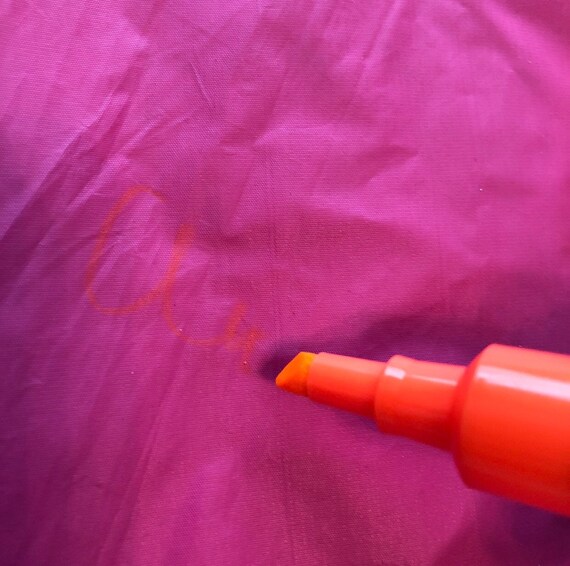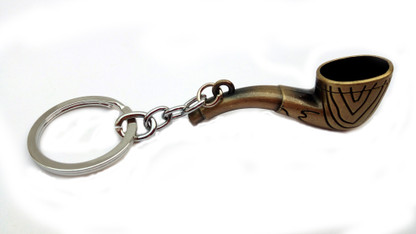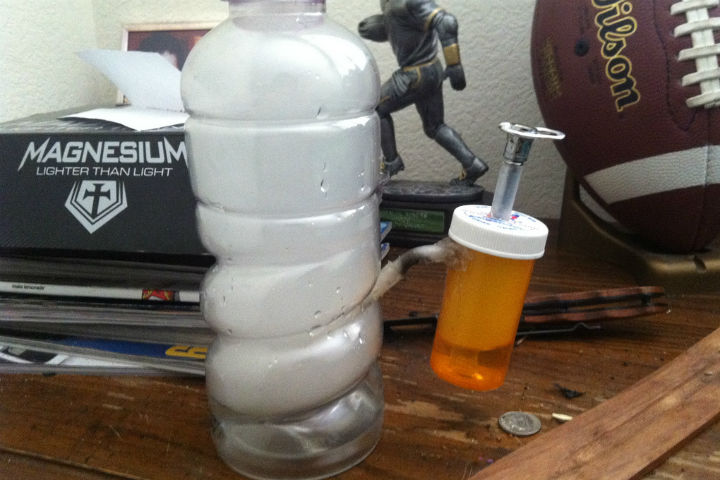

These products are not absorbent, do not color, and lack the smoking quality of the block carved pipe.

In selecting a meerschaum pipe it is advisable to take assurances that the product is indeed carved from a block of meerschaum, and is not made from meerschaum dust collected after carving and mixed with a binder then pressed into a pipe shape. Old, well-smoked meerschaum pipes are valued by collectors for their distinctive coloring.

Meerschaum is a very porous mineral that absorbs elements of the tobacco during the smoking process, and gradually changes color to a golden brown. The word "meerschaum" means "sea foam" in German, alluding to its natural white color and its surprisingly low weight. It has been used since the 17th century and, with clay pipes, represented the most common medium for pipes before the introduction of briar as the material of choice in the 19th century. Meerschaum (hydrated magnesium silicate), a mineral found in small shallow deposits mainly around the city of Eskişehir in central Turkey, is prized for the properties which allows it to be carved into finely detailed decorative and figural shapes. There is a growing tendency towards "natural" tobaccos which derive their aromas from artful blending with selected spice tobaccos only and careful, often historically-based, curing processes. blends are made of American Burley with sweeteners and flavorings added to create an "aromatic" flavor, whereas "English" blends are based on natural Virginia tobaccos enhanced with Oriental and other natural tobaccos. James Parish, Louisiana) which is also an old method of fermentation, or blends of Virginia and Burley tobaccos of African, Indian, or South American origins. Many of these are blends using staple ingredients of variously cured Burley and Virginia tobaccos which are enhanced by spice tobaccos, among them many Oriental or Balkan varietals, Latakia (a fire-cured spice tobacco of Syrian origin), Perique (uniquely grown in St. Tobaccos for smoking in pipes are often carefully treated and blended to achieve flavour nuances not available in other tobacco products. Expensive pipes once had stems made of amber, though this is rare now. Less common are stems made of reeds, bamboo, or hollowed out pieces of wood. Stems and bits of tobacco pipes are usually made of moldable materials like vulcanite, lucite, Bakelite, and soft plastic. Because it is molded rather than carved, clay may make up the entire pipe or just the bowl, but most other materials have stems made separately and detachable. The stem needs a long channel of constant position and diameter running through it, although filter pipes have varying diameters and can be successfully smoked even without filters or adapters. Metal and glass are uncommon materials for tobacco pipes, but are common for pipes intended for other substances. Unusual, but still noteworthy pipe bowl materials include gourds, as in the famous Calabash pipe, and pyrolytic graphite.

Pipe bowls of all these materials are sometimes carved with a great deal of artistry. Minerals such as catlinite and soapstone have also been used. Less common are cherrywood, olivewood, maple, mesquite, oak, and bog-wood. The bowls of tobacco pipes are commonly made of briar, meerschaum, corncob or clay. Pipes can range from the very simple machine-made briar pipe to highly-prized handmade and artful implements created by renowned pipemakers which are often very expensive collector's items. A smoking pipe for tobacco smoking typically consists of a chamber (the bowl) for the combustion of tobacco and a thin stem (shank) ending in a mouthpiece (the bit).


 0 kommentar(er)
0 kommentar(er)
